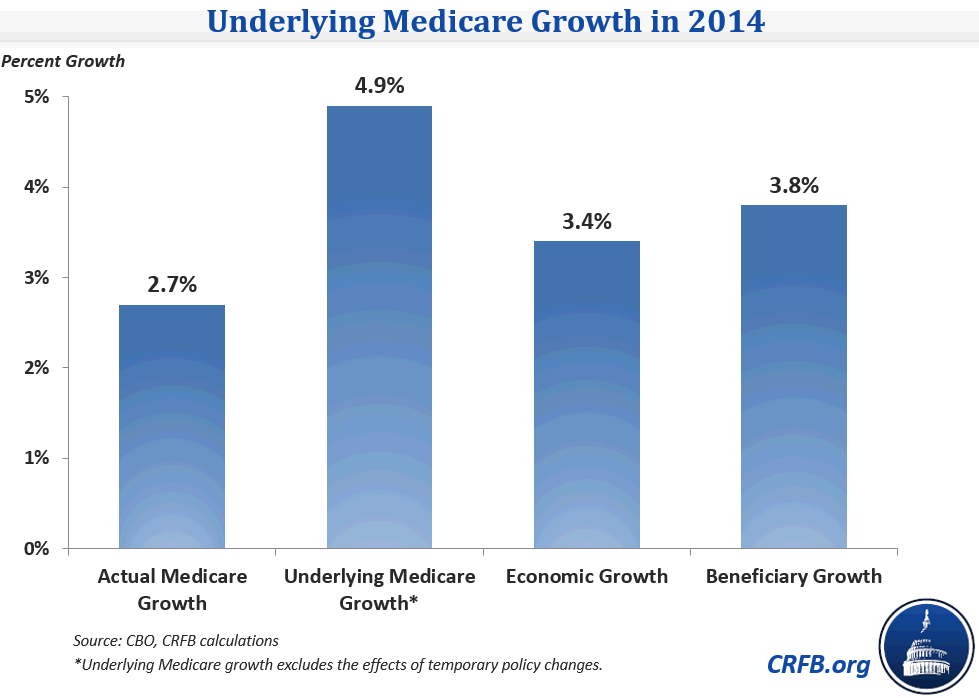Medicare Registers Fourth-Lowest Growth Rate in Program History in 2014
With today's release of the Congressional Budget Office's (CBO) final Monthly Budget Review for Fiscal Year (FY) 2014, many will be focused on the final 2014 deficit, but it also shows that Medicare clocked its fourth-lowest annual growth rate in history, at just 2.7 percent.
We have been closely following the unusually slow growth of Medicare throughout this year, and also documenting the program's "underlying" growth rate, or what growth would be with temporary or phased-in legislative cuts removed from the calculation*. Dechipering this underlying growth rate should provide a truer picture of the magnitude of Medicare's cost slowdown.
Interestingly (though not surprisingly), the three years with slower growth than this year -- 1998, 1999, and 2013 -- coincided with similar temporary or phased-in cuts.
For 2014, Medicare's underlying growth rate ended up at 4.9 percent, roughly one percentage point faster than both economic and beneficiary growth. Therefore, even removing these temporary effects, Medicare still grew slower than general inflation on a per beneficiary basis.

Going forward, CBO expects Medicare cost growth to remain roughly the same in 2015 at 2.6 percent, although growth is expected to return to levels we're more used to seeing later in the decade. The underlying growth rate in 2015 should be closer to actual growth since the sequester will no longer be affecting the growth rate (it will have been in effect for all of FY 2014, so it will only affect the level of payments in 2015).
*The temporary policies holding down spending growth are the Medicare sequester (which wasn't in effect for part of FY 2013), payment reductions in the Affordable Care Act for home health agencies and Medicare Advantage plans, ramped-up hospital re-admission penalties, and frozen means-tested Medicare premium income thresholds. On the other side, the gradual filling in of the Part D "donut hole" increases spending growth.

